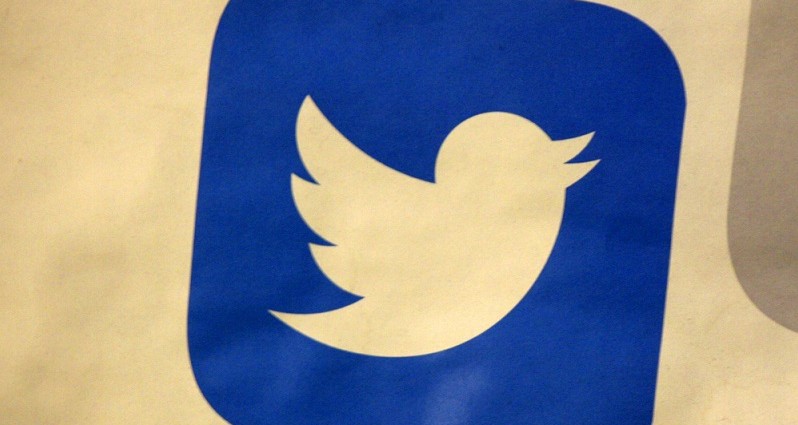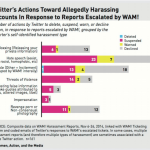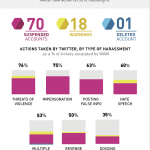Twitter trolls’ most commonly used methods of attack against other users are hate speech and doxing according to Women, Action and Media (WAM’s) report on harassment on the social network.
Doxing is the practice of digging up personal information or private documents and publishing them in a very public forum – like Twitter – usually to embarrass an individual.
The women’s group conducted research late last year to compile the Reporting, Reviewing, And Responding To Harassment on Twitter report, examining gender harassment and abuse on the platform.
WAM had announced that it was working with the company to explore better ways to deal with harassment and called for users to submit reports of harassment online to have them assessed and escalated to Twitter for special attention.
After three weeks, 811 submissions were received and the number was narrowed down to 161 genuine reports that were passed onto the social network.
Most submissions (57%) came not from people who has been on the receiving end themselves, but from bystanders, 27% fell under the hate speech category which includes sexist, racist and homophobic utterances), 22% fell under private information leaks, 12% were threats of violence and 3% were acts of revenge porn.
Another issue that came up was around Twitter’s initial supposed inaction in dealing with most of the cases. 67% of the respondents said they had notified Twitter at least once about a case of harassment and 18% said they had reported harassment at least five times before.
Twitter responds to reports in various ways. The company either deletes or suspends and account, warns a users of rejects the report altogether.
Of the cases escalated by WAM, hate speech and impersonation reports resulted in the highest number of accounts either suspended or given warnings. When measured against the ratio of overall reports received, threats of violence and impersonation reports received the most positive action from Twitter. Complaints about doxing were the ones most often rejected when measured against the number received.
WAM concluded its report with a few recommendations to Twitter that could help with making it easier for users to report incidents of harassments and dealing with them.
“The problem of evidence prevents comprehensive resolution for all reports where abusive tweets were deleted,” the group said. “Twitter can develop new policies that recognise and address the ‘tweet and delete’ technique harassers use to manipulate Twitter’s evidence requirements around doxing.
“The company can also more broadly and clearly define what constitutes online harassment and abuse beyond ‘direct and specific threats of violence against others’ or ‘threats of violence against others, or promoting threats of violence against others’ to increase accountability for more kinds of threatening harassment and behaviour.”
Download and read the full WAM Reporting, Reviewing, And Responding To Harassment on Twitter report or view a summary of the findings on the WAM website.
[Image – Shutterstock]



